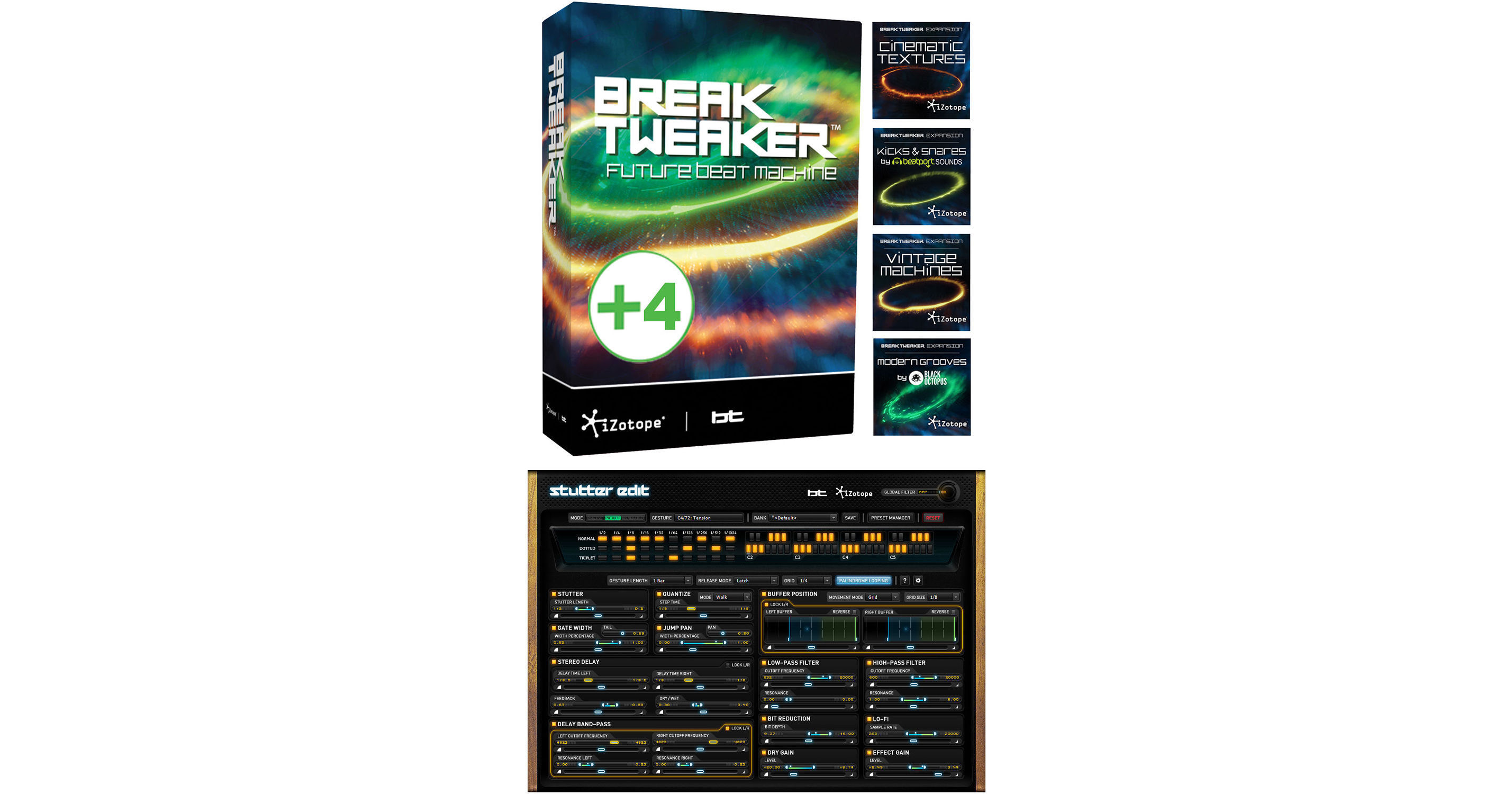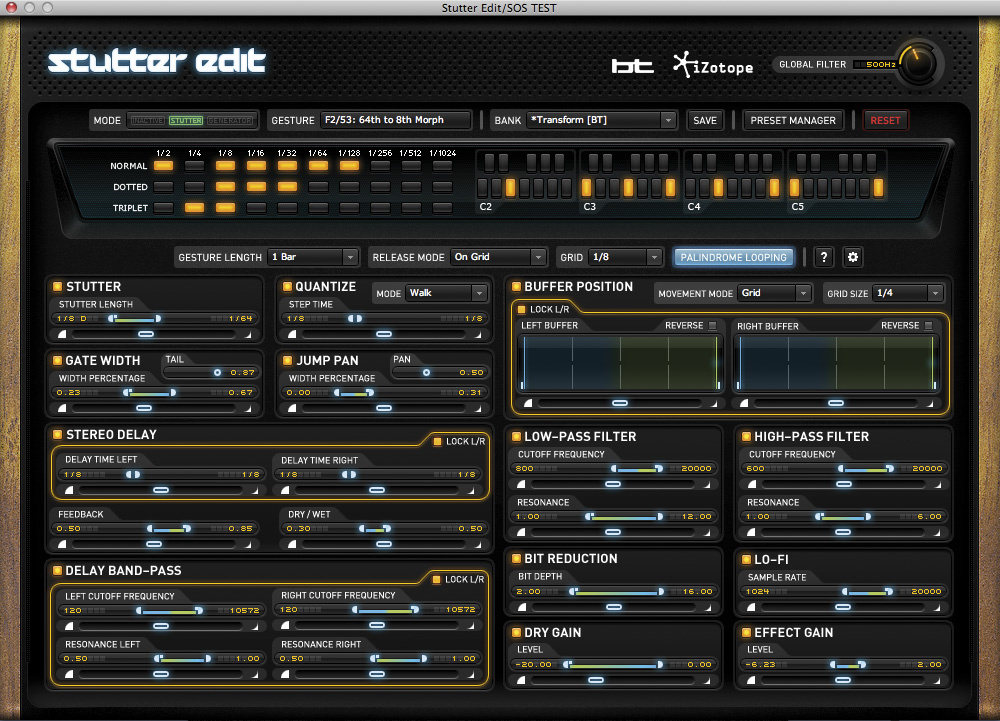

One significant innovation is that, in addition to modules and presets, Stutter Edit uses what it calls “gestures,” pre-programmed combinations of effects with which you can easily perform.

(The price goes up to US$249 after Valentine’s Day.)

But if you want all of this combined into a semi-modular suite, Stutter Edit’s promo price of US$149 should be a steal. There’s so much in this one plug-in that some users may stick with building their own solutions in modular environments or continuing to use chains of other tools. I think that’d be grossly unfair – if anything, Stutter Edit may face the opposite challenge. My first reaction to Stutter Edit was that it would be a sort of instant BT machine. For all the breadth of tools here, any one effect on its own isn’t new – certainly not in the year 2011, though I think it was probably more unique when BT first started using early builds. Sometimes, that leads to obvious and uninteresting results, but with some skilled laptop performers, it has also created some unique, personalized beat slicing contraptions. Since only BT had this software, users often took tools like the fairly simplistic Ableton Beat Repeat (or others) and combined them in more sophisticated chains.

In the intervening years it’s taken to release Stutter Edit, though, we’ve heard a lot of these sorts of effects in live performance. It’s far deeper than I would have imagined in its combined modules, and while I’m not sure it’ll shake me from some other tools, I’m impressed with the combination of tools. The results may be closer to what some people have done with Reaktor patches and the like than a previous product. All of these settings are cleverly mapped to performance controls so you can play the resulting effects. It does repeats of different musical lengths, but also pitched effects, buffer position, bit reduction and digital distortion, delay, gate, pan, and filters. But Stutter Edit is more of a multi-effects stuttering effect, packed with different processors and rigged for life performance. Ableton’s Beat Repeat and Audio Damage’s superb Replicant, among others, do something like that. The idea is this: take the style of sliced-up, digitally mangled, stuttering micro-edits, and turn it into an instrument. The video interview here is likely your best bet for getting his current take, direct from the source. Note: The conversation made an impression on me, personally, but I’m recalling something that happened some time ago. Now, in a release from iZotope, BT’s Stutter Edit is available as a finished, polished product.
Izotoppes stutter edit software#
But the one software release that has been generating buzz amongst producers may be iZotope’s Stutter Edit.īT told me in an interview some years ago about how he was using software in beta that he said would change the world, as he claimed credit for the stuttering, sliced editing style that has since become so popular. Hardware greatly eclipsed software among music tech announcements and last week’s NAMM trade show.


 0 kommentar(er)
0 kommentar(er)
